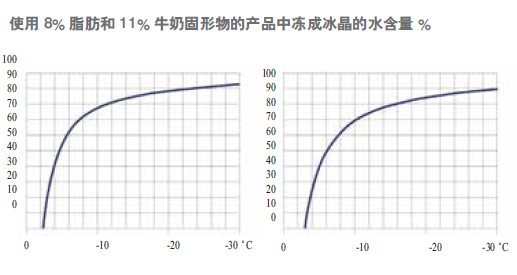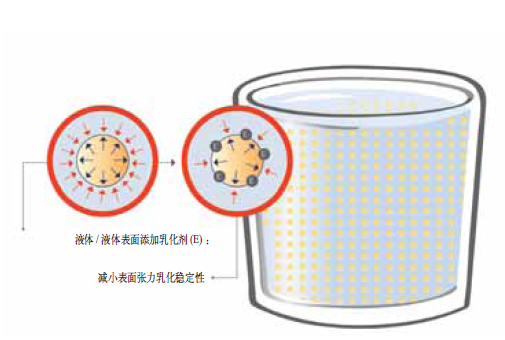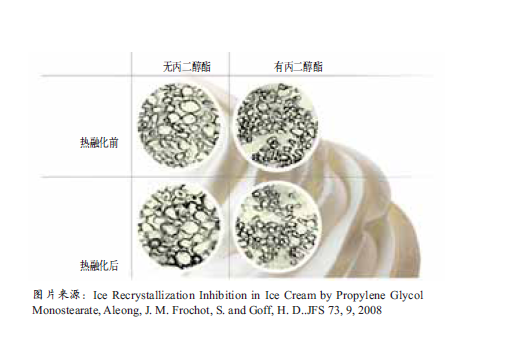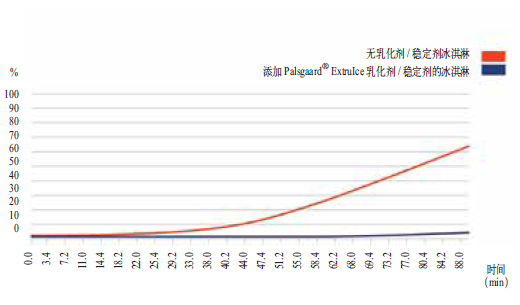It is well known that ice cream is extremely sensitive to changes in temperature. How can ice cream makers resist thermal shock and maintain good ice cream quality?
The quality of ice cream is affected by temperature fluctuations during transport and storage – but what is the root cause of this problem? How can ice cream makers maintain good ice cream quality?
Heat source
It is well known that ice cream is extremely sensitive to changes in temperature. Most people think about the effects of the sun, for example, in the hot summer, the ice cream will melt. However, even a relatively slight fluctuation in the long process from the factory to the entrance leads to a decline in the quality of the ice cream. The negative effects of this temperature fluctuation include loss of taste, rough sandy texture and significant moisture crystallization.
Overcoming the impact of thermal shock
Of course, it is impossible for any manufacturer to fully control the temperature fluctuations that may occur at each moment in the plant: during loading, during transportation, when entering a retail store, when placed on a display case and when storing, from the showcase to the consumer's home. But there are a lot of things to do in terms of formulation and processing, to make sure the product is ready to meet the challenge and to retain the excellent quality of the ice cream as much as possible.
Raw material related
Ice cream is a complex system that contains a small cell-like gas (air) in a partially frozen continuous phase. In this continuous phase, the fat is dispersed inside the emulsion system, the milk solids and stabilizer are present in the colloidal solution, and the sugar and salt form a true solution.
There are three raw materials that have the greatest impact on the thermal shock resistance of classic ice cream: milk solids, sugars, and additives (emulsifiers and stabilizers).
Milk solids and sugar have a great influence on the freezing point of ice cream, so the type and ratio of these two ingredients are very important.
Although fat is important to the structure of the product, its effect on ice crystals is small because it acts in the oil phase rather than in the aqueous phase.
Effect of milk solids
The milk solids stabilize the ice cream and provide the body for the mesh structure of the product.
But it is a relatively expensive ingredient in ice cream, so reducing the proportion of milk solids is a trend in demand from many manufacturers. However, if the amount of milk solids is reduced, the moisture content of the product will increase. All water needs to be crystallized, which leads to a dull taste and reduced stability.
Choosing a milk solid that is resistant to thermal shock requires the manufacturer to have a good judgment on its quality. First, the milk solid form should best support the product to form the desired texture. The most common is powder, but milk or cream is also more common.
Sugar: fine adjustment, big impact
Sugar plays two roles in ice cream: controlling the taste and freezing point of the product. On the one hand, adding a large amount of sugar can lower the freezing point of the product and help achieve the desired softness (such as soft spoon ice cream). But doing so will also cause the product to be more susceptible to damage during transport, with more free moisture attached to the existing ice crystals, resulting in an increase in ice crystals. On the other hand, too little sugar content can cause the ice cream to harden.

Figure 1 Effect of different sugar components on the melting curve of ice cream
Even if the fat and milk solids content is the same, if the sugar content or type is adjusted, the proportion of water frozen into ice crystals will be different. Figure 1 shows the effect of different sugar content on the freezing curve of 8% fat and 11% non-fat milk solids (MSNF) ice cream.
Of course, there are different types of sugar. Ice cream is usually a combination of refined sugars such as glucose syrup. This combination also affects the texture and freezing point of the product. Some manufacturers even add a small amount of salt to the mixture to further reduce the freezing point of the product and increase the sensitivity of thermal shock.
Effect of emulsifier
Fortunately (more accurately, thanks to our more than 100 years of R&D experience), modern plant emulsifiers have a variety of ways to protect ice cream from thermal shock.

Figure 2 Amphiphilic emulsifier molecules (partially hydrophilic, other structurally lipophilic)
As shown in Figure 2, the emulsifier has hydrophilic and lipophilic properties and is a surface activating additive. Its application to the interface layer between fat, protein and water can help to improve or control the following aspects of the product:
â— fat emulsification in the system;
â— fat agglomeration and coalescence;
â— air mixing;
â— The dry appearance of extrusion;
â— resistance to melting;
â— Thermal shock stability;
â— Smoothness and cream ratio.
The most commonly used emulsifiers in ice cream are mono-, diglycerin fatty acid esters (E471), glycerol fatty acid esters (E472b), propylene glycol fatty acid esters (E477), and composite products of these emulsifiers.
In general, good collocations come from common emulsifiers and stabilizers such as mono-, diglycerol fatty acid esters, carrageenan and locust bean gum. But the premise is that their dosage and ratio are accurate to suit each formula.
For example, the addition of propylene glycol fatty acid esters such as propylene glycol mono-hard fatty acid esters ensures the formation of fine ice crystals during freezing and reduces the growth of ice crystals during transport, helping the product to withstand thermal shock effects, as shown in Figure 3.
Production process attention point
The ice cream production freeze stage, the goal is to license as many small ice crystals as possible to provide the maximum possible total surface area.
The freezing process is accompanied by an aeration process that does not freeze all of the water, as the ice cream needs to be poured into the ice stick after it leaves the chiller at around -6 °C (21.2 °F). After this process is completed, in order to provide thermal shock protection for the product from the beginning, it is necessary to put the product into a quick-freezing tunnel at -40 °C (-40 °F) as soon as possible, and finally put it at -18 °C (- 0.4 °F) storage cold storage.

Figure 3 How propylene glycol ester (PGMS) emulsifiers maintain ice crystal size during temperature fluctuations during transport and storage
However, this process cannot always be tightly controlled, and some plants transport ice cream through long pipes, which can cause warming, such as ice cream heating to -3 °C (26.6 °F) before injection. The injection process also causes the temperature to rise, and then it is likely that the product will need to be placed on the pallet until the tray is full to move into the appropriate freezer. In a warm climate or environment, it can have a big impact, and the ice crystals will begin to melt and become water and attach to other crystals. The longer the deep freezing time of the entire production process, the more water is transferred in this way, and the earlier the thermal shock damage is greater.
Also pay attention to the aging process, which is between the mixing and freezing process. The pasteurization method dissolves the emulsifier and stabilizer, kills the bacteria, and homogenizes to support the fat structure, and all the ingredients are at -5 °. Place under C (23 °F) for 4 h to overnight.
Pre-embedded emulsifier and stabilizer
Figure 4 shows the two melting curves of an ice cream, which is an accurate measurement by special machine melting. The container is placed under the ice cream and the result is the percentage of the total weight in the container. The upper curve reflects the melting condition of the original ice cream formula, and the relatively good curve below shows the effect of adding the Pasga pre-embedded emulsifier and stabilizer, Palsgaard® ExtruIce.

Figure 4 Melting curve of ice cream with or without stabilizer/emulsifier
It is worth noting that if the homogenization is not carried out at the appropriate pressure level, the melting curve may also be affected by homogenization. This does not directly affect the stability of the thermal shock, but it may weaken the structure of the ice cream and accelerate the melting.
Emulsifier selection
So which emulsifier is most resistant to thermal shock? For example, monoglyceride, it has many forms and properties (differentiated by the composition of fatty acids, and the content of monoesters and diesters), each Both can make a difference in the quality of ice cream.
The correct proportion ratio is used to compound the emulsion stabilizer to support the structure of the ice cream and resist the impact of thermal shock, thus meeting the needs of manufacturers and consumers, which requires a lot of professional knowledge. At the same time, attention should be paid to the overall quality of the product, the ingredients, the emulsifier and stabilizer components, the processing flow and equipment. Users can also discuss product packaging issues with product packaging manufacturers who may have better packaging and handling recommendations.
Pasca studied different formulations to find the right combination of premium emulsifiers and stabilizers. For example, not all emulsifiers can react well with formulas (low-cost milk solids instead of skimmed milk powder), depending on the type of milk solids used. This means that it takes many experiments and even multiple errors to find out which additive, additive ratio and amount are most effective.
Strategy against thermal shock
The user's protection strategy for thermal shock may depend on the market positioning of the product in terms of quality, the conditions of the plant, and the actual price point.
Whatever it is, one thing is certain that the thermal shock stability of ice cream will help maintain quality, providing a better consumer experience and a more secure future for its products in retail stores. There is no doubt that the emulsifier and stabilizer selected by the user will be the key.

Figure 5 Pasca has established application centers in Denmark, Singapore, China and Mexico. The application center experts here are able to test various types of ice cream, testing the ingredients, process parameters and their effects on melting, thermal shock and mouthfeel.
Opportunities from a new beginning
Also keep in mind that revisiting the choice of emulsifier will bring important new opportunities: introducing sustainable production of raw materials to meet fast-growing customer and regulatory requirements. Persian's non-GMO plant-based sustainable emulsifiers are typical examples of emulsifiers produced at 100% low-carbon plants using only 100% RSPO (Sustainable Palm Oil Roundtable Initiative) certified and non-certified separation system levels. Made from palm oil and its derivatives.
The writer is the manager of the Global Product and Application Center for Dairy and Ice Cream at Pasca, Denmark.
Changhong Imp. & Exp. Co., Ltd. , http://www.ly-foods.com